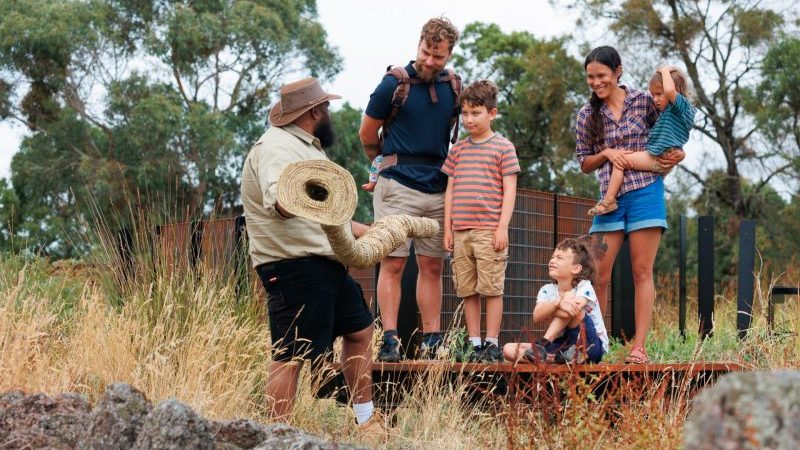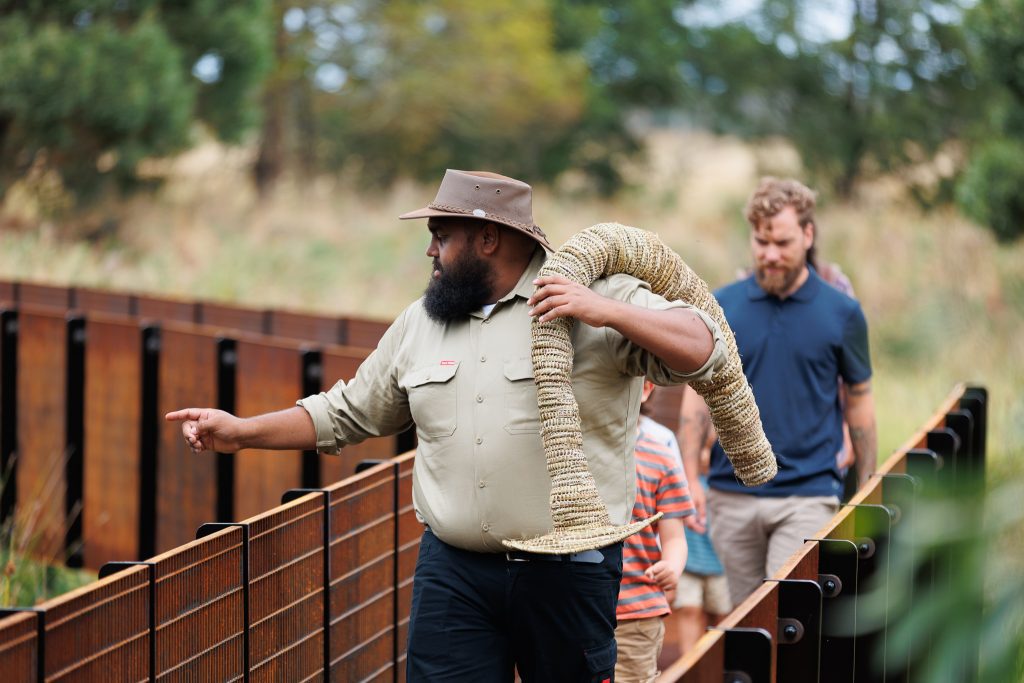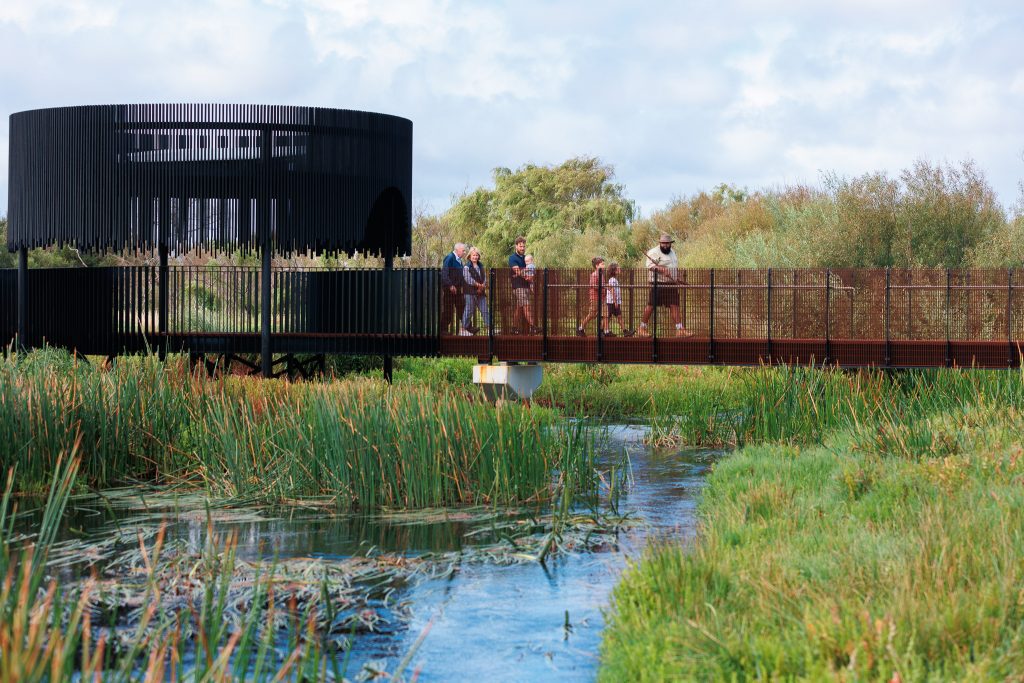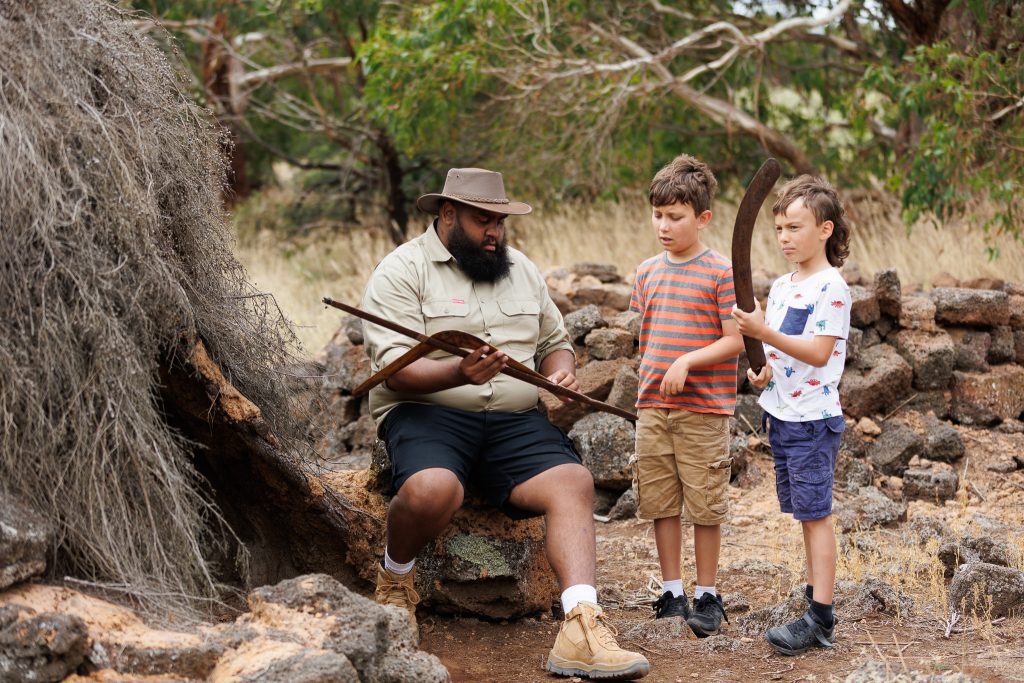
The Budj Bim Cultural Landscape in Western Victoria is one of the most important heritage landscapes in Australia. Travel writer Kerry van der Jagt discovers the significance of this amazing site.
This blog is brought to you in partnership with Welcome to the countryA not-for-profit marketplace for Indigenous Australian experiences.
Long before the Egyptians diverted the Nile or the Romans built aqueducts, the Gundetgmara people of southwestern Victoria constructed an elaborate hydro-engineering system designed for the hunting, storage and harvesting of koyang (short-finned eel).
The series of modified aqueducts, dams and ponds dates back 6,600 years and is considered one of the oldest and most extensive aquaculture systems in the world.
“Snake farming and trading the surplus with other nations has enabled my people to develop a large, stable community,” says Brydon Saunders, a local guide and Gundetjmara man who was instrumental in pushing for Bodge Beam to open to visitors. "Eel and fish traps rewrote the history books, proving that our gangs were more than hunter-gatherers leading nomadic lives."

The stones are muted today, but it takes a little imagination to conjure up a scene of men working eel traps, adjusting stonework in keeping with seasonal floods, while women weave elaborate fish nets and baskets.
In appreciation of the highly productive system, which provided an economic and social base for Gunditjmara society for six thousand years, Budge Beam's cultural scene Listed as a World Heritage Site in 2019, it is the first Australian landscape to be included solely for its indigenous cultural values.
Since registration, a lot of work has gone into the Gunditjmara community in developing a First Nations owned and operated property Experience scenic tourism in Beam Bodge. Opened in July 2022, visitors can join a variety of tours led by Gundetjmara guides of eel traps and channels, remnants of circular stone dwellings and smoking trees, where eels were prepared for consumption or trade.

The new cultural tourism experience is located in and around Bodh Pem National Park and Tai Rak (Lake Cunda), behind Victoria's scenic Great Ocean Road. "The infrastructure and elevated walkways allow guests to step out between fisheries systems and stand on top of them," says Saunders. The site also includes the Tae Rak Aquaculture Centre, bush tucker cafe, retail space and display tank.
Visitors on a tight time frame can enjoy a two-hour guided cultural tour of Tai Rak's aquaculture sites and wetlands, while those with a little more time can take a half-day Tongat Mering (Stone Country) tour. This full-day Kooyang Yana tour includes the protected Kurtonitj indigenous area, Gorrie drystone lake walls and a guided walk in the Tae Rak wetlands.
“Or you can just come and have coffee, cake, barramundi or smoked eel for lunch. Our chefs do a great job of creating a story with food,” says Saunders. Tae Rak Aquaculture Center is open Wednesday through Sunday for tours and meals.
Whichever tour you choose, this new tourism venture will take everything you thought you knew about Aboriginal culture and blow it out of the (eel-infested) waters.

“Each time you go out you will learn more, build on your experiences. Each visit will be different, as different things happen during the different seasons. The menu in the café will also change depending on what is seasonal.”
The country of Gundetjmara is a disturbingly beautiful place, created by fire and brimstone some 37,000 years ago when the volcano Bodj Beam (which means "high head") erupted, spewing lava flows and forming lakes and waterways.
“Budj Bim saw our people struggling to live sustainable lives. They were living too much on themselves, and there wasn't enough for each other,” Saunders says. “So he revealed himself and changed the landscape by spewing blood (lava) and teeth ( stones), and force them to change their ways. It's a story as old as time, about caring for each other and caring for each other."
The trapping system was as innovative as it was simple, using the natural springs and lakes created by the eruption to guide the eels into storage ponds. “Then my people had to create channels through the basalt, through which the eels could follow. It was designed so that they could enter without leaving.”
“If you ask how we're going to do it, it's a very complicated process. We basically used fire, because this stone is so porous, and fire would cause the stone to collapse. So our gangs used fire to create channels.”
Remains of eel traps can be seen in other locations across Australia and all over the world, but the unique feature of Beam Podge is that they have been carved and molded into the landscape, meaning the traps and ponds can be used and reused for thousands. Years.
"It was about not making a massive change to the landscape," says Saunders. "But in terms of making a change small enough that it works in our favor but doesn't have a negative impact on the environment."
Caring for the country and sharing stories with others lies at the heart of Budge Beam's cultural landscape tourism. "My country and my home—and I'm thinking about him romantically now—mean everything to me," says Saunders. "It's been a real whirlwind for the last six weeks leading up to the opening, but the overwhelming emotion is one of complete pride in what we've been able to achieve, whether 6,600 years ago, or three years ago with the World Heritage listing. So much pride."
Keen to visit Bim Bodge? Welcome to the country has all the information you need.
The writer is a descendant of the Oapakal people of the mid-north coast of New South Wales.
Source link
0 Comments